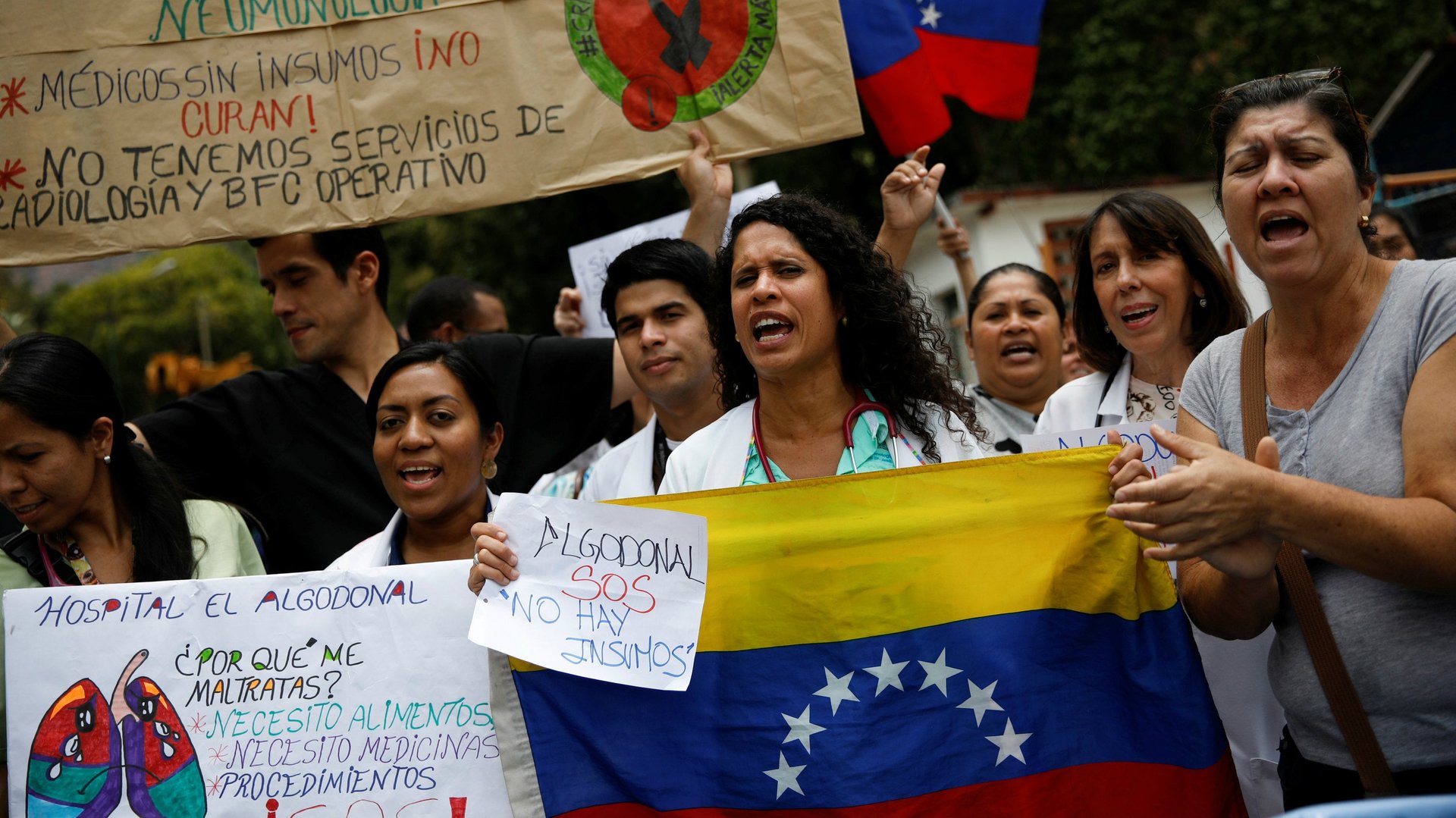Inflation in Venezuela will be 1,000,000% by the end of the year
By the end of 2018, the inflation rate in Venezuela will surge to 1,000,000%—yes, 1 million percent—according to the International Monetary Fund.


By the end of 2018, the inflation rate in Venezuela will surge to 1,000,000%—yes, 1 million percent—according to the International Monetary Fund.
At this point the actual number doesn’t really matter—what matters is that hyperinflation has undoubtedly arrived. The pace of price increases in Venezuela has reached levels comparable to the Weimer Republic in 1923 or Zimbabwe in the late 2000s, the IMF said yesterday (July 23).
Venezuela’s currency has been collapsing for years now. Strict capital controls have turned food and medical-supply shortages into a full-blown humanitarian crisis. The IMF forecasts the economy will contract by 18% this year, its third consecutive year of double-digit GDP declines. Meanwhile, GDP per capita will fall below $10,000. ”Venezuela remains stuck in a profound economic and social crisis,” the IMF said.
That crisis will continue. “We expect the government to continue to run wide fiscal deficits financed entirely by an expansion in base money, which will continue to fuel an acceleration of inflation as money demand continues to collapse,” the organization noted.
The possibility of a course correction in Venezuela was severely diminished in May, when Nicolás Maduro won a presidential election that gives him six more years in power. The election was a sham, with a boycott by the opposition and voter turnout at a record low.
Maduro continues to blame other nations—particularly the US—for Venezuela’s economic nightmare, rather than his own policies. His governance has devastated a country that sits on the world’s largest pile of oil reserves; it has even led wealthy Venezuelans to turn to bitcoin, and the government to launch it’s own cryptocurrency, in an effort to circumnavigate international sanctions.
The crisis is impacting other countries too, as Venezuelans flee. Colombia says there are now more than 870,000 Venezuelans living there.
Comparisons to 1920s Germany and late-aughts Zimbabwe are ominous. Zimbabwe ultimately had to abandon its currency after the country started printing 100-trillion-dollar banknotes. In late 2008, prices in the country took just 25 hours to double (pdf). In 1923 Germany, the monthly inflation rate was 29,500%. That hyperinflation and the surrounding economic crisis provided an opening for Hitler’s rise to power.